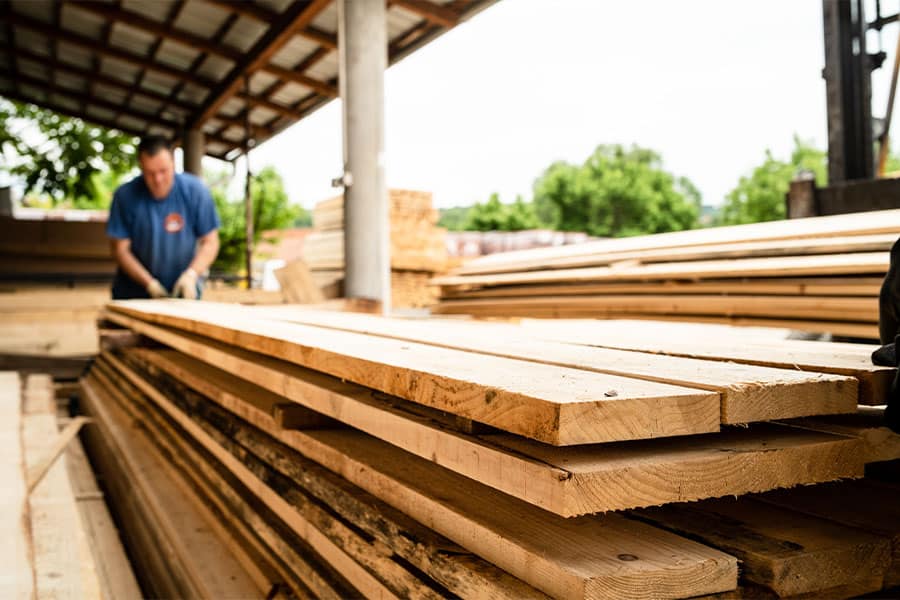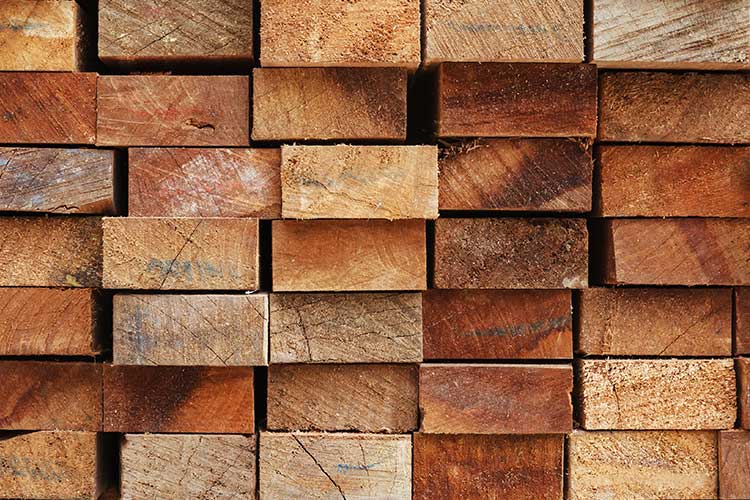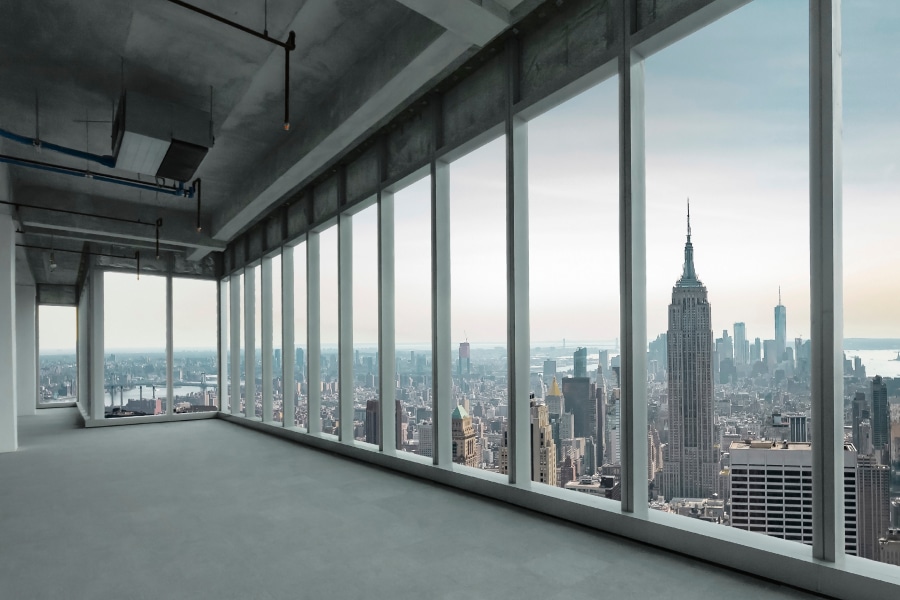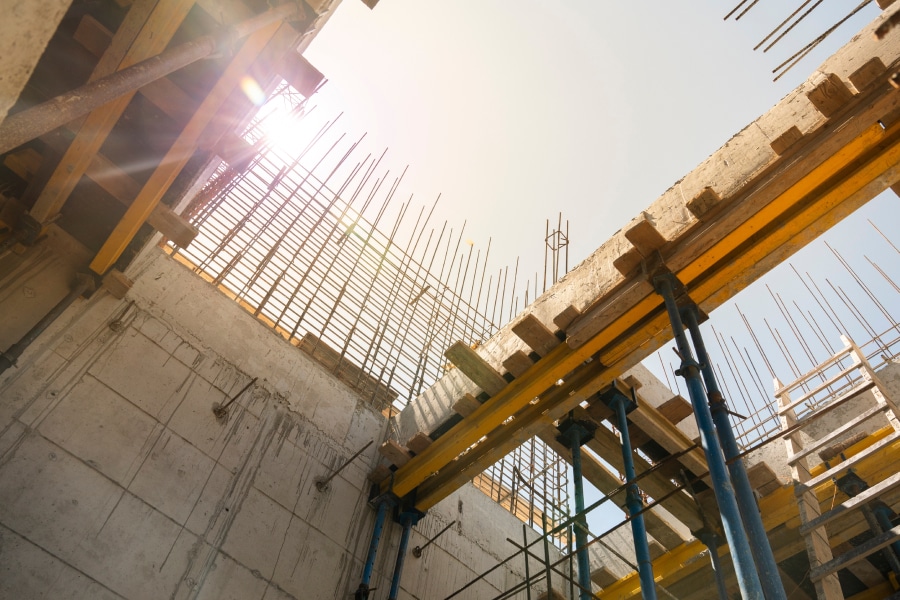Since May 2021, the cost for lumber has plummeted 60% from a high of $1,600 per 1,000 board feet. Although they’re still the poster child for materials volatility in the industry, lumber prices may soon correct to more sustainable—and predictable—levels. Lower lumber prices may be in our future.
In April 2021, the Built Blog interviewed John Robbins, U.S. managing director for professional services firm Turner & Townsend, to find out what’s behind volatility in lumber prices today. Now that lumber prices are dropping, Built went back to Robbins to get his updated perspective on what the price movement means for contractors and builders.
Built Blog: What’s going on with lower lumber prices?
Robbins: As an overarching comment, I think we’re starting to see some of the volatility leveling out across the general supply chain. Prices will still jump around as we make our way out of the pandemic. But we’re seeing some more favorable downward trends on prices that were getting a bit exaggerated.
Built Blog: How much did lumber prices really rise? Why were lumber prices so high?
Robbins: Between our own data and the professional associations that track commodity prices, consensus is that lumber went up by about 300% in the course of a year. If you look back a year ago, it was probably more in the range of $350 to $450 per 1,000 board feet. Then, in May of this year, prices started to drop back down quickly. So, it was a steep rise, and now a steep decline.
Built Blog: How low could lumber prices go? How much further do you see lumber prices dropping?
Robbins: We all wish we had a crystal ball to predict that number. But, generally speaking, it’s looking like we won’t go back to pre-pandemic levels. I do think we might settle back to between $500 to $600 per 1,000 board feet. Although this is dependent on how quickly contractors can use their stockpiles and how consistent the construction demand stays in the near term.
Built Blog: What’s driving the drop in prices? Why are lumber prices falling fast?
Robbins: It’s really a reversal of the market forces that drove the prices up in the first place.
The general disruption in the supply chain that happened in the early days of the pandemic had a substantial effect on the lumber industry. Sawmills and lumber producers hedged their bets and cut back on production and manufacturing, thinking they were going to settle in for a long downturn.
Additionally, like every other business, sawmills also had to cope with COVID impacting their own staff, forcing them to close or go with reduced headcount. Mills in both the United States and Canada had trouble staying open at any production level.
Then, somewhat unexpectedly, there was a huge uptick in new homebuilding. A large population of younger people who kept working and were able to grow their savings could purchase their first home. That, coupled with historically low interest rates, motivated buyers to take out mortgage loans. And, at the same time, the DIY-ers we’re hitting Home Depot and Lowe’s to buy homebuilding products for projects.
Built Blog: So now those factors are operating in reverse?
Robbins: Yes. The home construction market is starting to level off a bit from the peaks during the pandemic. The movement from urban to suburban areas seems to have settled, too. And the home improvements that were being done have run their course—now it’s summer, COVID restrictions are easing in many parts of the country, and people are spending on vacations and other things. At the same time, we’re also seeing that most of the sawmills are back up to pre-pandemic production levels. So we’re getting the balance back in supply and demand.
Built Blog: How does the supply chain look overall?
Robbins: The supply chain is getting back on its feet. Suppliers are able to hold dates and the prices are coming down a bit across all materials, although nothing skyrocketed like lumber.
For example, steel probably holds the second position from the standpoint of volatility. Most experts agree that the trend of increasing steel prices really started when tariffs were put in place well before the pandemic. Once the pandemic hit, steel experienced the same kind of manufacturing and labor disruption as lumber, although not to the same degree. Steel prices increased about 75%, plus or minus a few percentage points.
ALSO ON BUILT:
All the manufacturers that use steel are still catching up—whether they make light fixtures, appliances, piping, electrical conduit and wiring, or anything with a metallic component. Like lumber, I expect that they’ll be back to full capacity and flush out the backlog by the time we get through 2021. What’s different will be how global trade policy plays out. We’ll have to see if the new administration does anything different around tariffs.
Concrete, however, has remained relatively stable, with an increase of just 6% to 8%. That’s more than normal inflation, but still a single-digit increase.
Built Blog: Where has the volatility in lumber pricing had the greatest impact?
Robbins: Lumber tends to be more prevalent in the residential market. I think the number you hear most is that the average cost of a new home has gone up by $36,000 due to lumber costs.
Commercial contractors tend to be larger and able to lock in favorable pricing on building commodities. They can work out longer-term pricing with some of their biggest suppliers. So we’ve seen a little more stability in the final cost of a commercial project. Still, they’re running about double normal inflation—6.5% to 7.5% instead of 2.5% to 3.5%.
Built Blog: What would be your advice to construction leaders on handling the shift in prices?
Robbins: We—and most experts—are predicting that the numbers will continue to drop from where they are today. So the first piece of advice we’ve given to construction companies, as well as to owners and investors, is that, if time is on your side, try to wait on your projects. Think about your schedule and whether you can push it out a month or two—while watching the commodities market closely—to get the best pricing possible.
Once supply chains get back to normal, consider buying in bulk. Stockpile materials or at least lock in hard pricing for a time period. If you have a procurement department, get them busy watching the commodities markets and the price of general building materials.
Owners need to look for a level of protection to lock in a secure price. I think some interesting contracting strategies will develop, as well as new approaches to sharing risks associated with cost between the builder and the owner or investor.
Built Blog: Would it be fair to say as the price of lumber goes, so goes the economy?
Robbins: I do think lumber has an overall influence on the economy. It’s a bit of a bellwether, certainly over the past 18 months. I think the volatile pricing has eroded the confidence of builders, owners and buyers. But, the decline in price is helping to bring that confidence back. A lot of times, confidence and the robustness of the economy go hand in hand.
Built Blog: What do you consider the takeaway for the last year or so?
Robbins: Markets are cyclical for lots of different reasons. Unfortunately, this cycle is being driven by one of the worst events in history. But, we are finding our way out. And it shows what a resilient people we are, overall, to hang in there—not just in the United States, but in every corner of the Earth.












